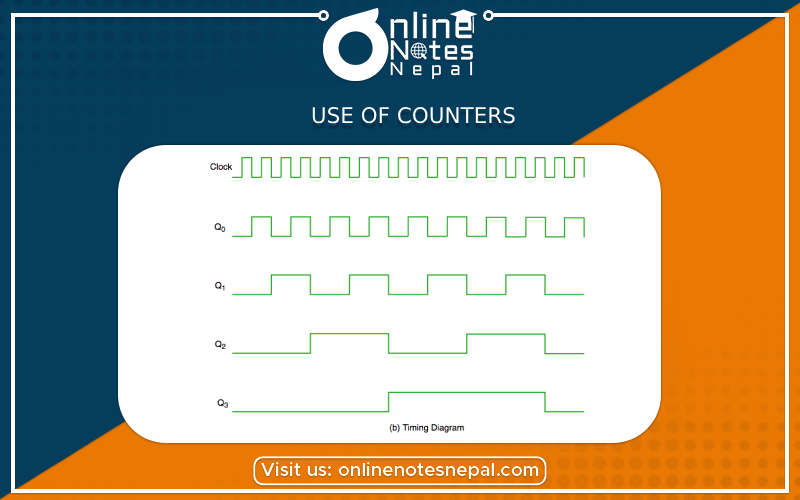Published by: Nuru
Published date: 22 Jun 2021

There is a use of counters in a variety of fields. They are mainly used in counting applications, where the measuring of signals is essential. Moreover, it also measures the time interval between two unknown time instants.
There are some of its applications below:
These are the type of clock that displays the time digitally opposite to the analog clock. Here, the time indication is by the position of rotating hands of the clock.
Digital clocks typically use the 50 or 65-hertz oscillation of AC power or a 32,768-hertz crystal oscillator as in a quartz clock to keep time. Most digital clocks display the hour of the day in a 24-hour format. Digital clocks often need to be reset even for a brief period of time.
A simplified logic diagram of the digital clock displaying seconds, minutes, and hours is shown above. Initially, there is the conversion of 60 Hz sinusoidal ac voltage into the 60 Hz pulse waveform. It is then divided into a 1 Hz pulse waveform by a divide-by-60 counter formed by a divide-by-10 counter. A divide-by-6 counter follows this. Divide-by-60 counters produce the second and minute counts.
pic
These counters above count from 0 to 59 and then again recycle to 0. We see that a decade counter having the truncated sequence forms every divide by 6 portions. Also, there is decoding of terminal count 59 to enable the counter of the chain.
There is a figure below which explains the system of automobile parking control. There is the connection of the Up/Down counter to the sensors. These update the sequence. And, this also shows if the parking is full or more parking spaces are available. This is possible through the use of the interfacing unit.
pic
Multiplexer plays a great role in it as shown in the figure below. There is the conversion of parallel bits of data on the multiplexer inputs to the serial data bits on the single transmission line. A group of bits appearing simultaneously on the parallel lines are the parallel data. And, the group of bits appearing on the single line in a time sequence is the serial data.
Conversion of a stream of multiple data elements received simultaneously into a stream of data elements transmitted in time sequence, i.e., one at a time is parallel to serial data conversion. We can do it usually by the use of counters to provide the binary sequence for the data select inputs of a data selector. This is also a multiplexer.
There is a block diagram for parallel to serial data conversion by using multiplexer below:
pic